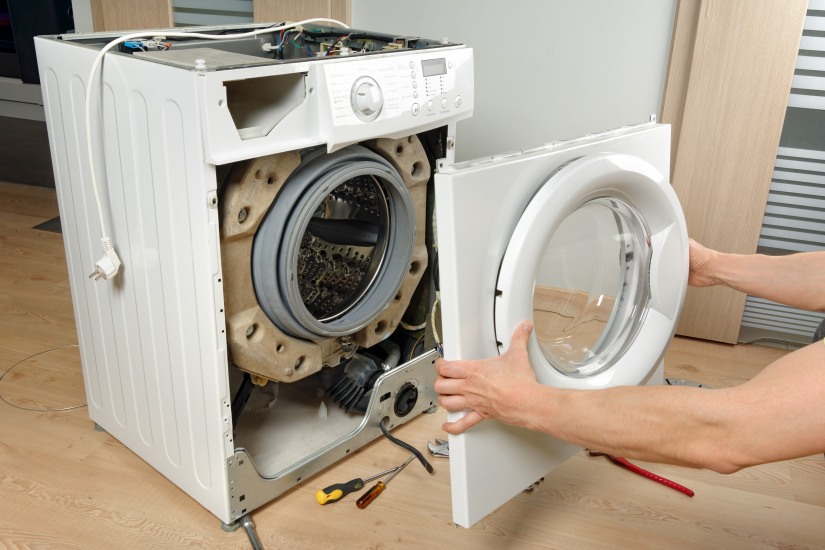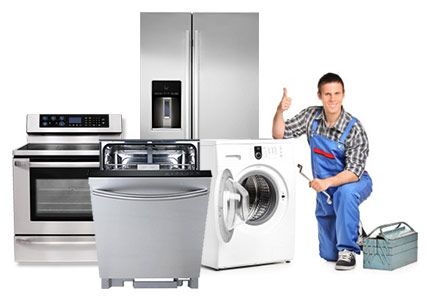The Ultimate Guide to Recognizing Device Repair in the house
When your refrigerator stops cooling down or your stove declines to heat, it can really feel overwhelming. Comprehending device repair in the house can conserve you time and cash. You'll discover to identify signs and symptoms, use important devices, and follow a systematic troubleshooting process. But prior to you begin, there are crucial safety precautions you require to take into account. What are the most typical problems, and exactly how can you fix them? Let's explore the basics.
Common Home Appliance Problems and Their Signs and symptoms
When your devices begin breaking down, it's important to identify the indications early. Disregarding them can lead to bigger concerns and pricey repair work. If your refrigerator isn't cooling effectively, you may notice warm areas or condensation developing. This might indicate a failing compressor or an obstructed vent.Your dishwashing machine might show problems via unclean meals or unusual sounds during cycles. If you listen to grinding or clanking, it's time to investigate.A cleaning equipment that won't spin or drain pipes can leave you with soaked laundry, suggesting a clogged up drainpipe or a malfunctioning pump.Lastly, if your oven's temperature level seems off or it takes for life to pre-heat, you could be taking care of a defective thermostat. By remaining sharp to these symptoms, you can deal with concerns before they escalate right into significant repair services.
Important Devices for Home Appliance Repair Work
When you're taking on appliance repair work in the house, having the right devices is essential. Fundamental hand tools like screwdrivers and pliers will certainly help you disassemble and repair numerous home appliances, while electrical testing gadgets guarantee you're working safely with wiring. Let's go over what you need to get started on your fixing trip.
Standard Hand Devices
Having the right devices is important for effective appliance repair in the house. Start with a dependable screwdriver collection, including both flathead and Phillips types, as screws are common in device assembly. Pliers are likewise essential; they assist with gripping, twisting, and reducing cables or little elements. A set of needle-nose pliers can reach difficult situations easily. You'll need a good adjustable wrench for tightening up or loosening nuts and bolts. An utility blade comes in handy for reducing via packaging or insulation. Don't forget a strong workbench or surface to securely organize your devices and parts. With these fundamental hand devices, you'll be well-prepared to tackle most home appliance fixings that come your way.
Electric Testing Instruments
Alongside fundamental hand devices, electric screening devices play a crucial function in device repair. These tools assist you diagnose electric issues and assurance home appliances function securely. A multimeter is crucial; it gauges voltage, existing, and resistance, enabling you to identify troubles promptly. A non-contact voltage tester is another must-have, letting you discover real-time wires without making direct call, boosting your security. Secure meters are great for gauging current flow in cables without separating them, saving you time and effort. Furthermore, circuit testers can promptly inspect if outlets are functioning properly. By utilizing these gadgets, you'll enhance your troubleshooting procedure and boost your fixing abilities, making appliance maintenance a great deal easier.
Step-by-Step Guide to Diagnosing Home Appliance Issues
When your device acts up, it can be aggravating, but identifying the issue does not need to be overwhelming. You'll discover to determine usual issues and use reliable repairing methods. Let's walk through the steps to obtain your device back in functioning order.
Typical Appliance Troubles

Troubleshooting Techniques Clarified

Fixing Significant Kitchen Area Appliances: A Closer Look
Have you ever wondered how to tackle usual problems with your cooking area appliances? Repairing significant kitchen area devices like refrigerators, ovens, and dish washers can be simpler than you assume. Begin by determining the problem-- whether it's a refrigerator not cooling or a stove that will not heat up. Frequently, a simple reset or checking the source of power can address the issue.For refrigerators, clean the condenser coils and check the door seals. If your stove's not home heating, inspect the home heating component and thermostat. Dish washers could just need a clean filter or a reset to obtain them back in action. Constantly unplug the appliance before diving into repair work to guarantee your safety.Don' t neglect to get in touch with the individual handbook for details troubleshooting tips connected to your version. With a bit of persistence and the right tools, you can with confidence tackle device repair work and conserve cash while doing so!

Troubleshooting Washing Devices: Tips and Techniques
When your washing home appliances begin breaking down, it can really feel frustrating, yet troubleshooting them doesn't have to be a trouble. Begin by checking the power supply. Validate the home appliance is plugged in and the outlet is working. Next off, check the door or cover switch; a damaged button can stop the maker from operating.For washers, if it's not spinning, inspect for out of balance tons. Redistributing the garments may resolve the problem. If your dryer isn't heating, tidy the dust filter and examine the vent for blockages.Listen for uncommon sounds; they can suggest an issue. If your home appliance is dripping, check the hose pipes for splits or loose connections. File any kind of error codes presented on digital displays, as they can direct you in determining the problem. Ultimately, seek advice from the individual handbook for particular troubleshooting tips connected to your model.
Safety And Security Precautions to Take During Services
Before you start any device repair work, it's vital to focus on safety to protect against crashes or injuries. Unplug the device or turn off the circuit breaker to ensure no power reaches it while you function. Usage protected devices to minimize the danger of electrical shock. Use safety and security goggles and handwear covers to shield on your own from sharp sides or debris (Dependable Refrigeration & Appliance Repair Service Washer repair near me).Make specific your work area is clean and well-lit, so you can see what you're doing. Maintain youngsters and pets far from the area to avoid interruptions and potential risks. If you're dealing with gas home appliances, be extra careful; look for leaks prior to proceeding.Take your time, and don't rush through repair work. If you feel unpredictable concerning any step, it's much better to stop and study than to think. Complying with these safety measures will certainly aid produce a more secure setting for your DIY device repair work task
When to Call a Professional for Aid
Exactly how do you recognize if it's time to call in an expert for home appliance fixings? If you've tried standard troubleshooting without success, it's a clear sign. If your appliance still won't begin or shows unusual sounds after resetting it, do not wait to look for specialist help.When you observe leakages, smoke, or shedding scents, focus on security and call a professional right away. These issues can result in even more substantial damages or position risks to your home.Also, if your appliance is under service warranty, speaking to a specialist is typically the finest route. They can guarantee that repairs won't nullify your warranty, saving you money in the lengthy run.Finally, if you're unclear or unpleasant with complex repair work, it's smart to leave it to the experts. Keep in mind, taking on challenging concerns without the appropriate competence can bring about costly errors. Depend on an expert when unsure!
Frequently Asked Inquiries
Exactly How Can I Stop Device Troubles in the Future?
To stop home appliance troubles in the future, you should carry out normal maintenance, check for deterioration, tidy filters, and avoid overloading. Staying aggressive will help expand their lifespan and maintain them running smoothly.
What Are the A Lot Of Typical Do It Yourself Appliance Repair Work Mistakes?
You may forget safety preventative measures, skip fixing steps, or make use of inaccurate devices when attempting do it yourself home appliance repairs. Hurrying the process or ignoring maker guidelines can cause even more substantial issues and costly errors. Stay client and informed!
Just how Do I Know if a Component Demands Substitute?
You can tell if a part requires substitute by checking for uncommon sounds, leakages, or irregular efficiency. If the home appliance battles to operate correctly or reveals noticeable damage, it's likely time for a substitute.
Can I Utilize Generic Parts for Device Fixes?
Yes, you can use generic parts for device repairs, however determine they're suitable - Maytag Washing machine repair Dependable Refrigeration & Appliance Repair Service. Common components might save you cash, yet they could influence performance or longevity, so evaluate your choices carefully before choosing
What Service Warranties Cover Device Services?
Most home appliance guarantees cover repair services for making defects, however they often exclude damages from abuse. Inspect your service warranty terms carefully, as some may require making use of certified specialists and original components for coverage to continue to be legitimate.